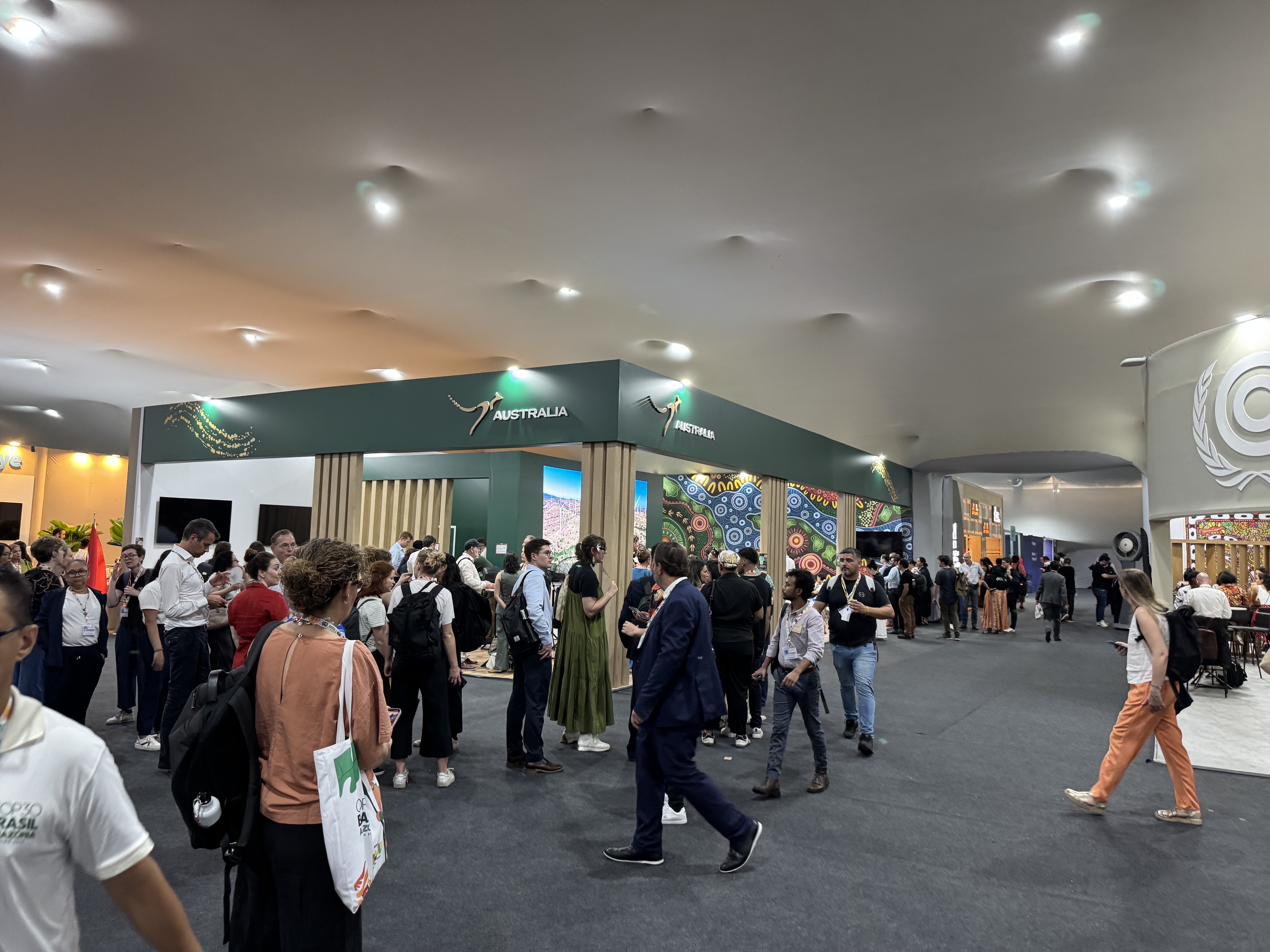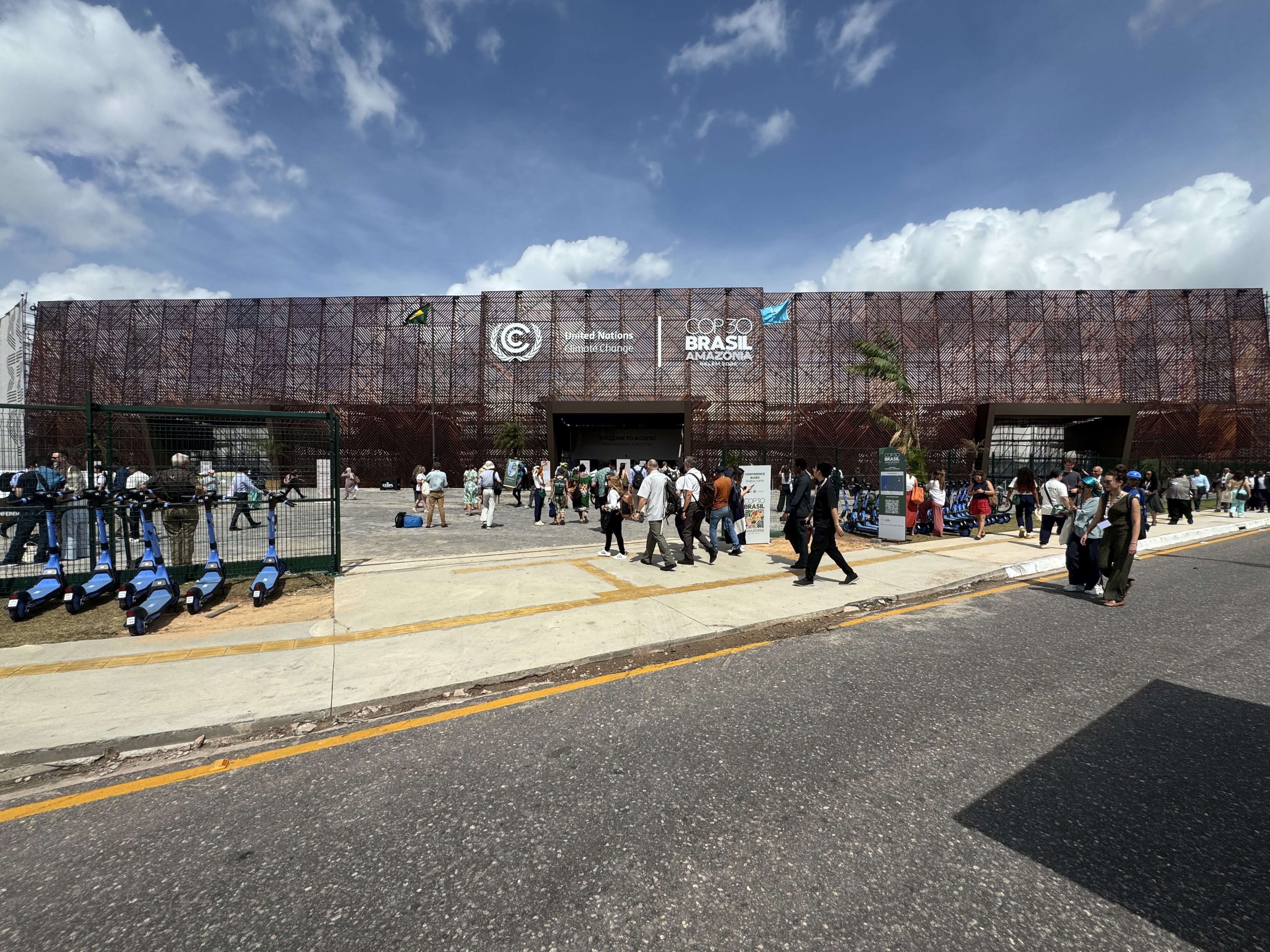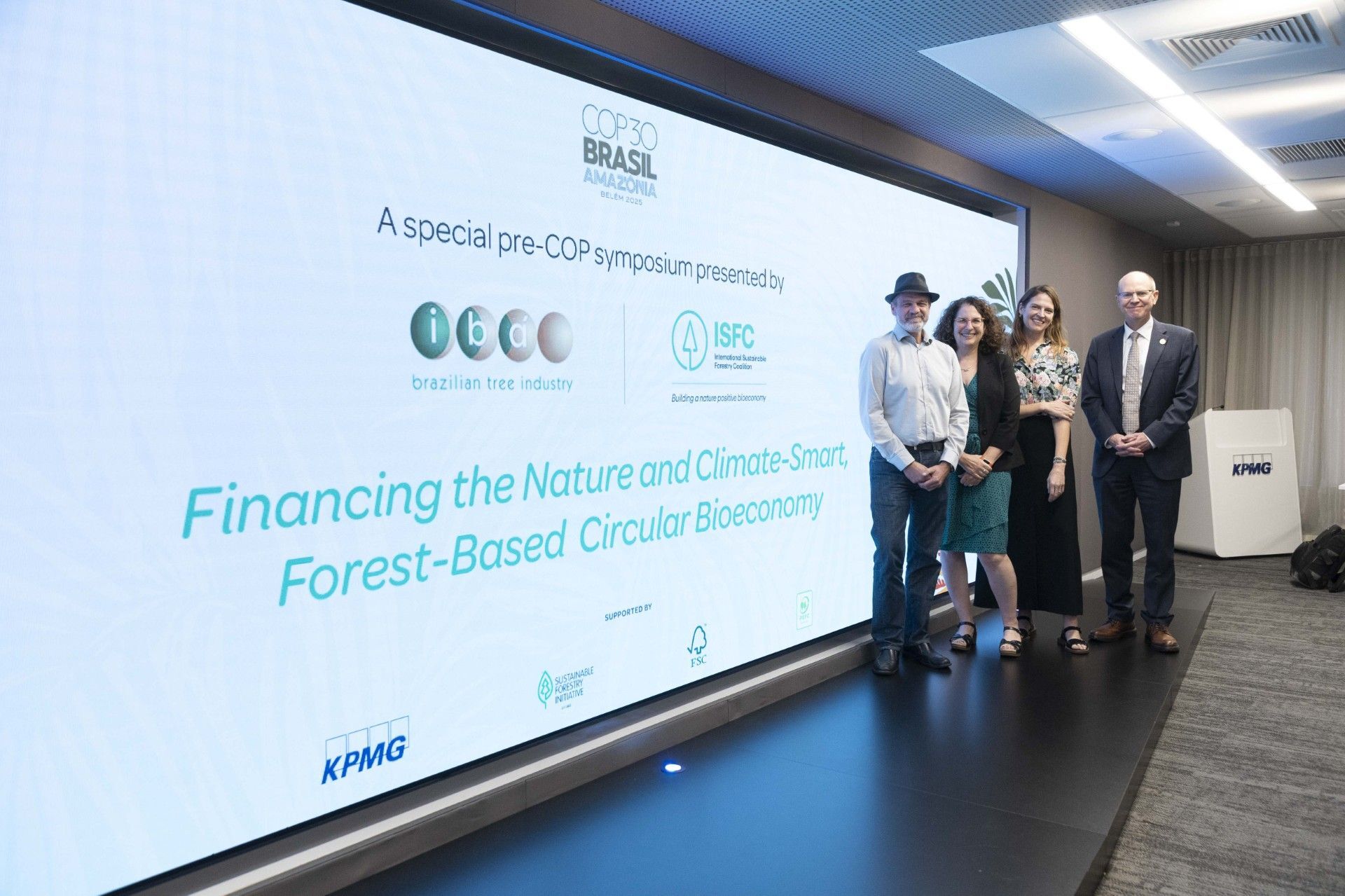COP30 reflections: What Belém revealed about the future of forests - and PEFC’s place in it
For more than a decade, global policy has recognised forests as fundamental to climate resilience, biodiversity commitments and social development. What felt different in Belém was not a new revelation, but a sharper alignment.
COP30 reflections: What Belém revealed about the future of forests - and PEFC’s place in it
26 November 2025 Event report
For more than a decade, global policy has recognised forests as fundamental to climate resilience, biodiversity commitments and social development. What felt different in Belém was not a new revelation, but a sharper alignment.

Across construction, restoration, labour, finance, disclosure and natural-capital accounting, the sessions where PEFC participated did not treat forests as a supportive element - they treated them as structural components of climate strategies.
Across the sessions where PEFC moderated and contributed, the links between sustainable forest management, economic transitions and climate commitments were articulated with unusual coherence.
And the PEFC model - national ownership, local implementation, global assurance - aligned closely with the enabling conditions described across many discussions.
COP30 clarified how much more integrated the global forest agenda has become, and how central trusted assurance now is to that integration.
Construction: a materials transition that depends on forest trust
COP30 widened the number of stakeholders treating timber in construction as a structural climate solution and strengthened the focus of the conversation toward enabling conditions for scaling: the acceleration plan outlining the shifts needed in technology, skills and policy; and a shared set of principles giving the sector a stable reference point for responsible construction.
Together, they signalled a sector moving into an implementation phase, and one that PEFC can support through credible sourcing.
In this context, one message resonated strongly: if cities build with wood, cities will help build forests. It captured the strategic logic that climate-aligned construction can reinforce restoration, sustainable management and local economies – but only when supply chains are demonstrably responsible.
Trusted sourcing, traceability and assured forest management as provided by PEFC form the enabling conditions that allow the discussion to move from ambition to delivery.
COP30 didn’t redefine the case for timber; it made its systemic potential more explicit, and it highlighted credible assurance as an essential part of scaling the materials transition responsibly.
Restoration: a landscape succeeds only if people can stay

The restoration dialogue in Brazil made a decisive point: restoration succeeds when value remains within landscapes.
Brazil’s examples made the point forcefully: restoration lasts only when value remains in the landscape – when local institutions, economic opportunities and governance systems are strong enough for communities to stay, build, and benefit.
Speakers described restoration as territorial development requiring logistics, land-tenure security, coordination and long-term economic incentives.
This aligns with a core premise of the PEFC model. National systems integrate local ownership, context-specific solutions and institutions capable of sustaining long-term management. In Belém, this alignment became more visible as many actors sought verification approaches capable of reflecting local realities rather than imposing uniform methods.
The global restoration agenda is increasingly seeking verification models that reflect local realities, avoid one-size-fits-all methods, and provide trusted evidence of outcomes. COP30 confirmed that the PEFC approach fits naturally into this trajectory.
Decent work: the social architecture of climate credibility
The Amazon decent work session highlighted something that policymakers often acknowledge but rarely elevate: environmental credibility depends on social integrity.
The evidence shared, for example precarious working conditions and the link between poor labour standards and deforestation, underscored that forests cannot be considered sustainable if the people managing them lack safety, rights and stable livelihoods.
This expectation is not new for PEFC, but its prominence is growing. Forests cannot function as climate solutions long-term if the people managing them face unsafe conditions, insecure incomes, or a lack of rights. Our standards have long included labour and community requirements. What COP30 made clearer is that the next era of forest certification will need to make the outcomes visible.
This direction aligns with our system revision and with the broader evolution toward outcome-based assurance. The session in Belém aligns with PEFC’s ongoing system revision and with the broader shift toward demonstrating how forest management improves both ecological and social conditions. The discussion made clear that these elements are integral to system-level legitimacy.

Natural-capital accounting: where assurance meets disclosure
The conversations in São Paulo placed forest certification within a governance landscape where climate and financial disclosures are increasingly interconnected. The message was clear: credibility will hinge on whether assurance systems can produce structured, decision-ready information.
For PEFC, this direction is familiar. Our system already produces verified information, yet expectations are moving toward clearer evidence of change over time, greater transparency and smoother integration with emerging disclosure requirements.
What became clear in São Paulo was that agility in adapting standards and clarity in outcomes will define the next phase of credibility.
The direction is unmistakable: clearer evidence of change, greater transparency and alignment with emerging disclosure requirements. The move toward outcome-oriented indicators within the PEFC system revision reflects this shift. COP30 reinforced the need for agility in governance and the ability to translate forest performance into information that drives policy, finance and societal confidence.
Forests in transition: a familiar conversation, seen more cohesively
Forests have long been recognised for delivering climate benefits, biodiversity value, livelihoods and resilience. What Belém offered was a more cohesive framing, one that reflected how these dimensions function together.
The session brought them together in a way that mirrored how forest certification already operates on the ground: as a balancing act between environmental integrity, social wellbeing and economic viability. PEFC has long worked within this reality, grounded in national systems and local ownership.
The takeaway for PEFC was therefore about recognising alignment. The themes raised in Belém reinforced our core strength. PEFC’s national approach already embeds local institutions, local ownership and context-specific solutions into assurance. COP30 made clear that this is exactly what the global forest agenda now expects.
PEFC’s strengths are becoming more relevant
For PEFC, COP30 was not a course correction but a confirmation. It clarified that the direction the global forest agenda is now moving toward – context-specific solutions, trusted assurance, demonstrable outcomes and strong social foundations – is the direction PEFC has followed from the start.
Our national systems already reflect what many actors in Belém described as essential: institutions rooted locally; governance that adjusts to real conditions; verification that gives confidence to governments, companies, financiers and civil society.
The strategic implication is clear: PEFC’s strengths are becoming more relevant, not less. The global agenda is converging toward the model we already operate.
The task ahead is to make this value more visible, communicate outcomes more clearly and ensure that credible, locally grounded assurance continues to shape how forests contribute to climate action, biodiversity ambitions and resilient economies.